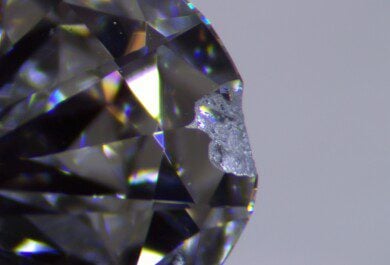Last month, Russia’s biggest diamond miner Alrosa (currently the biggest worldwide supplier of rough diamonds) produced a report analyzing the supply, demand and prices of rough diamonds for the next 8 years. The report is available online at this link:
Diamond Market Outlook June 2010
Alrosa predicts that rough diamonds will increase gradually up to a level that is 55% higher than the 2010-level. Considering the importance of this prediction, and the reliability of the source, I believe further analysis of this report could prove interesting.
1. Analysis of Supply
Few sources know the future supply of rough diamonds as well as Alrosa themselves. Where the annual supply was 165 million carats in pre-crisis 2008 it fell to 115 million carats in 2009. Production is gradually picking up again, but the policies of the major players are such that they will not maximize production immediately. In keeping with this, Alrosa predicts that production will only improve to 157 million carats in 2011, and a return to 166 million carats will not take place until 2018, after new mines are put into operation.
The reason for this slow growth, or should we say standstill, is that there have been no major diamond-finds in the past 15 years, existing mines are becoming less productive as they age and it takes up to 10 years for a new diamond-find to turn into an operational mine.
As such, I think that we can safely assume Alrosa’s prediction of supply to be correct. It is worth noting that De Beers’ shows a similar graph in their predictions.
2. Analysis of demand
The Alrosa-prediction of demand is based upon GDP-predictions in the world’s major jewelry-consuming regions. In a direct relation between GDP and jewelry-demand, future jewelry-demand is predicted. On that basis, future demand for polished diamonds and the resulting demand for rough diamonds is calculated.
This results in a predicted increase in demand of 33% compared to the pre-crisis-year 2008.
Considering individual diamond-consuming countries however, it is unclear whether a simple GDP-prediction offers a correct picture.
In the USA, currently the number one diamond-consuming country, the number of marriages is predicted to increase by at least 20% in the next six years, based upon demographical analysis. With the direct relationship between diamond-consumption and the number of marriages, it could well be that American diamond-demand will outpace the growth of GDP.
Also, in China and India, the newer, fast growing diamond-consuming countries, it is unsure whether past percentage of GDP dedicated to jewelry-consumption can be used for future predictions. Considering the explosive growth in these economies and their cultural appetite for jewelry, it could well be that here demand will also outpace GDP-growth.
In that sense, I consider Alrosa’s demand-predictions to be conservative and likely lower than reality. In other words, it could well be that future demand will be even higher than Alrosa’s predictions.
3. Price-predictions
Based upon their predictions of supply and demand, Alrosa shows a clear imbalance between supply and demand. Logically, this must lead to price-increases. Alrosa predicts a gradual increase in diamond prices to 55% higher than 2010 levels by the year 2018.
Here I must warn against using this figure as a prediction in the rise of consumer-prices for polished diamonds. Alrosa, as a miner, has calculated the price-increase in a way that is interesting for them; the average price-increase of all rough diamonds produced.
The production of rough diamonds is very diverse however, and includes a majority of rough that is semi-industrial or smaller sized, with a minority of rough that will yield larger gem-quality stones.
Recent history has shown that price-increases are very diverse in different fields of rough diamonds, and generally the bigger nice-quality stones go up more in price than the smaller and lower-quality stones.
As such, for consumers interested in the future price of a nice 1ct-diamond, I would predict that the Alrosa-prediction of a 55% increase is too low. In fact, considering the analysis of limited supply and increasing demand it seems a very conservative prediction.
Click here to Discuss on the Forum











